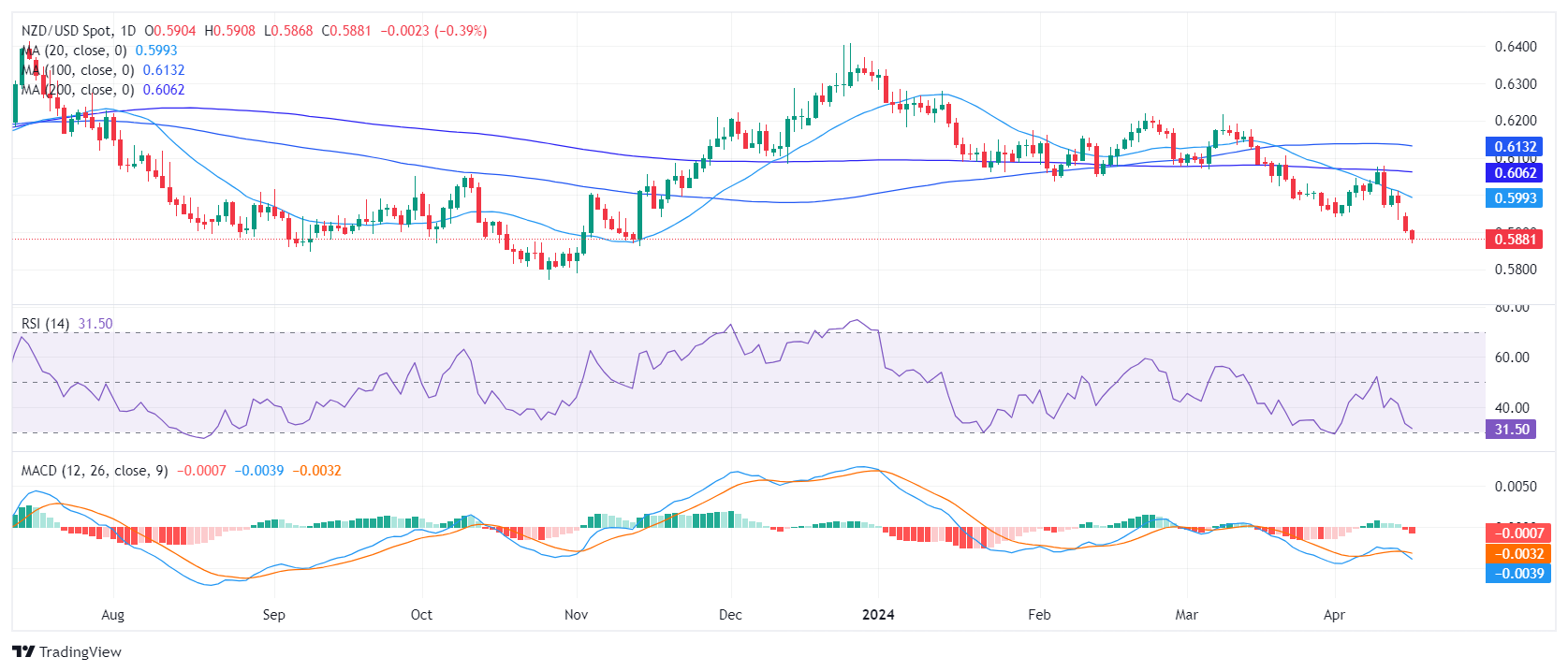NZD/USD plunges on hawkish Powell, risk aversion
- The USD strengthened, propelled by rising US Treasury yields and speculation of a Fed's delaying cuts.
- Escalating geopolitical tensions in the Middle East also drive demand for the Greenback.
- Fed's Powell commented that inflation is showing a lack of progress.
- Soft housing market from the US data failed to trigger a reaction on the pair.
The NZD/USD declined towards 0.5879 on Tuesday reflecting a loss of 0.46%, despite. The pair's movements are largely influenced by the market’s adjustments of their expectations and the delay of a rate cut by the Federal Reserve (Fed) by year-end. Rising Treasury yields are also applying downward pressure on the pair.
On the data front, in March, Building Permits experienced a decline of 4.3%, dropping to 1.458 million, below both projected and February's figures. Housing starts also saw a significant drop of 14.7%, falling short of expectations at 1.321 million. However, industrial production for the same month rose by 0.4%, meeting expectations.
What drives the pair downwards is markets now betting on a more aggressive Fed. Following strong US data, market sentiment adjusted with expectations of an initial rate cut in September, and a 70% probability for a second cut in December. Expectations for a June rate cut have decreased to 25% from 60% the previous week. In addition, on Tuesday, Jerome Powell hinted that he sees no progress on inflation and that he considered that the monetary policy may need some additional time to work. The readjustments in expectations are also propelling US Treasury yields which also benefits the USD over the NZD.
NZD/USD technical analysis
Based on the indicators of the daily chart, the NZD/USD pair is exhibiting negative momentum. The Relative Strength Index (RSI) stands at 33.18, indicating a negative trend and nearing the oversold territory. Additionally, the Moving Average Convergence Divergence (MACD) histogram is exhibiting rising red bars, confirming the negative momentum and suggesting that sellers currently dominate the market.
On the broader outlook, the NZD/USD also shows a negative trend as it trades below its 20, 100, and 200-day Simple Moving Averages (SMA). Unless buyers make a move above these levels, the bears will remain comfortable and dictate the pace of the pair.
NZD/USD daily chart
